Just northwest of Hanoi and in the foothills of Ba Vi Mountain can be found the large, peaceful and beautiful Dong Mo Lake. The 1,400 ha lake, which was formed through the building of a dam in the 1970’s, was formally a stream and wetland area close to the Red River that flows from China, across Vietnam and through Hanoi. With the waters used for agriculture and fishing its easy to overlook one of the most important aspects of the lake. It is also home to the worlds most endangered turtle species, and arguably the most endangered animal in the world. The critically endangered Swinhoe’s Soft-shell Turtle (Rafetus swinhoei) still inhabit the lake. The species is a large soft-shell turtle which can grow to over 150kg in size. First described in 1873 Swinhoe’s Softshell Turtle remained relatively unknown until the late 1990’s and early 2000’s when scientific interest was reignited due to the apparent incredible rarity in the species. The loss of lowland wetland habitat in northern Vietnam and southern China in which the species used to be most abundant coupled with intensive hunting between the 1970’s and 1990’s resulted in the species disappearing rapidly throughout its range.
At present, only four animals are known in existence – two which have been brought together in China’s Suzhou Zoo in the hope of breeding, one in Vietnam in Hanoi’s central Hoan Kiem Lake and the fourth confirmed in the wild by the Asian Turtle Program (ATP) in 2007 in Dong Mo Lake near Hanoi. The species, believed to be on the verge of extinction, has special cultural significance in Vietnam. A 15th century legend has led many people to revere the animal in Hanoi as a living god. Within the Legend a magical sword used by King Le Loi to defeat an invading Chinese army was returned to the water when a giant turtle in Hanoi’s Hoan Kiem Lake (Lake of the Restored Sword) surfaced and took the sword before disappearing. Breeding efforts in China have still proved fruitless, despite large numbers of eggs being laid since 2008 all have been infertile.
Through efforts by the ATP, Dong Mo Lake in Son Tay District of Hanoi was confirmed in 2007 to have wild Swinhoe’s Softshell Turtles surviving when a single individual was photographed in the wild. A program of conservation was then initiated with awareness and monitoring of the site. Local fishermen have participated in conservation by signing no hunting agreements and providing regular information to the monitoring team. The lake has remained relatively well protected through this local community support since then. But recently long lines of hooks have been found within the turtles habitat, although these smaller hook lines are set for the much smaller Chinese Softshell Turtle (Pelodiscus sinensis) they still pose a threat to their larger relative. If entangled the Swinhoe’s Softshell Turtle in the lake could be injured or killed.
The long hook lines have been prohibited in the lake since 2010 when Mr Pham Xuan Tu the lake owner banned them as part of a no-hunting agreement to protect the Swinhoe’s Softshell Turtle. Fishermen who are contracted to work on the lake have also been instructed to remove the traps If seen. In 2014 only two such lines were found, however in the month between the 13th of March and 12th of April 2015, six hooked lines have been found and removed by the fishing teams and ATP staff. Although the hooked lines themselves are not illegal to be used, the fact that their use threatens the worlds most endangered turtle species should be considered. Swinhoe’s Softshell Turtle are nationally protected under Decree 160/2013/ND-CP, this mean it is now offered the same protection as a tiger or elephant in the country.
In addition to the threat from the hook line local fishermen confiscated a set of electro-fishing equipment on the 11th April 2015. This brings the number of electro-fishing sets confiscated since January 2014 to eleven. The use of electrofishing equipment in Vietnam is illegal, potentially causing great damage to aquatic ecosystems, as it will kill a lot of aquatic wildlife, even those that are not being collected.
The Dong Mo Turtle has already had a number of brushes with death, on occasion it has become entangled in the fishermen’s nets but successfully broken free and in 2008 following the bursting of a dam on the lake it was washed downstream and caught by fishermen. Fortunately through the local counterpart network the ATP was able to work with another local NGO, Education for Nature Vietnam (ENV) and the authorities to have the animal rescued and returned to the lake.
If the species and legend in represents in Vietnam is to be safeguarded for future generations it is important that more urgent action is taken to protect the species. The wildlife protection authorities in the country need to be taking a stronger role in leading efforts to protect the species and in reducing threats to the species, whether they be direct hunting risks or risk of accidental injury or death. The loss of a single Rafetus swinhoei from the small global population will have an enormous impact on the possible survival of the species.
We would like to thank the Critically Ecosystem Partnership Fund (CEPF), IUCN, The Turtle Conservation Fund (TCF), Cleveland Metroparks Zoo and the Kim Son Police, Son Tay Forest Protection Department (FPD) and of course the fishermen and lake owner, Mr Pham Xuan Tu, without who’s support our conservation efforts would not be possible.
Press release by: Timothy McCormack & Pham Van Thong – ATP/IMC
Date: 15th April 2015

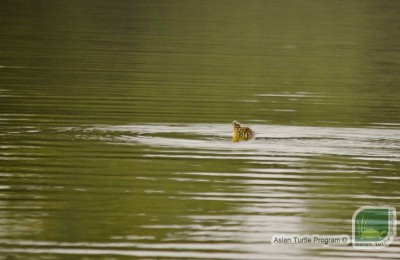




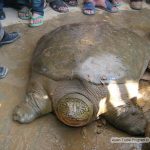



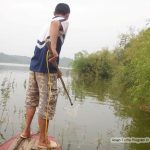
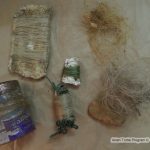

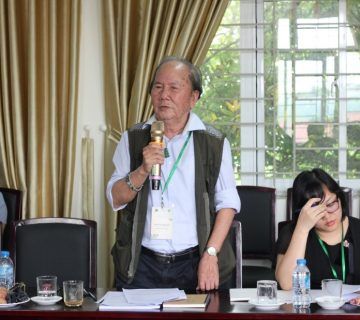
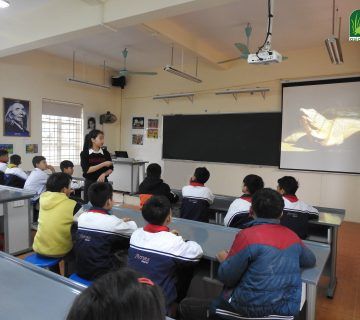
No comment